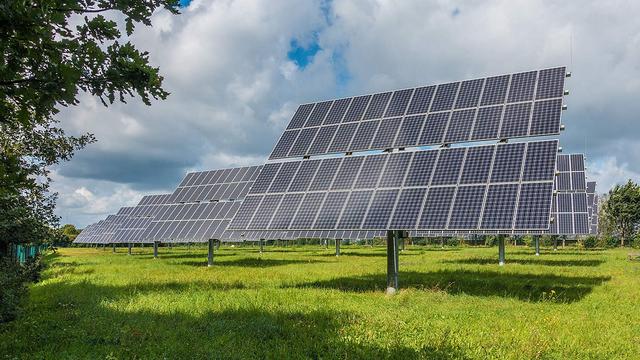To advance the energy transition from fossil fuels to renewables in the United States, policy makers should turn to community-based organizations (CBOs) like local chambers of commerce, community service centers, and community foundations.
That is the conclusion of new research conducted jointly by experts at the University of Texas at Austin’s LBJ School of Public Affairs and the University of Minnesota’s Humphrey School of Public Affairs, two of the top public affairs schools in the country.
Their paper, "The grassroots are always greener: Community-based organizations as innovators of shared solar energy in the United States," was published in Energy Research & Social Science journal.
It indicates that community organizations have qualities—such as mission-driven frameworks and the leverage to convene and provide information to large groups of people—that give them a unique ability to facilitate the energy transition, if policymakers provide the right resources. Their community-based goals can help advance society-wide goals for decarbonization.
“Communities are the critical linchpin between individuals and higher levels of governance," said Varun Rai, principal investigator of the project and an energy scholar at the LBJ School. “The road to successful energy transition is paved through communities. In this paper we show how the unique features and motivations of CBOs offer a very potent mechanism to accelerate the transition, while being more inclusive and operationally more sustainable.”
How policymakers can do more
Just ask Efrem Jernigan, president of South Union CDC in Houston; it’s a nonprofit solar classroom and community garden, built on what was once a landfill. South Union has grown to include activities like STEM education, solar tracking, aquaponics, meals and fellowship for the elderly, and public events. Soon, Jernigan will open an outdoor kitchen to teach the community how to cook food from South Union’s garden.
“Sixty years ago, this was a landfill in a Black community,” Jernigan said. “We came up with an idea on how to reuse this land and now, a little boy built a 50-megawatt solar farm that feeds the community he grew up in. I love this chapter of my life.”
Despite what he’s accomplished, Jernigan said there’s still a lot of work to do.
“South Union is making this impact alone, and we could be making a lot more impact with the right support,” he said.
“Policymakers need to support community organizations through actions like regional convenings, policy certainty, and mission-based funding, to create the networks and organizational support for community activation,” said Matt Grimley, a research fellow at the Humphrey School and the study’s lead author. “These types of policy support mechanisms mean moving beyond the idea that simple financial instruments or mandates can solve problems of community engagement."
The motivations of CBOs to participate in the energy transition, and the functions they can perform within energy transitions, are under-studied. Using community-shared solar (CSS) as a case study, the researchers introduce theories of organizational innovation to explain why and how community organizations participate to shape energy transitions.
Why local groups get involved
Researchers interviewed leaders of community organizations that have engaged in energy transition projects in different ways across the United States, as well as those in Texas that haven’t yet engaged in the energy transition but show the potential to do so in the future.
Organizations that participated in the energy transition did so through both internal and external innovations. An example of internal innovation is when organizations re-interpreted or expanded their mission to accommodate the goals of energy projects.
An example of external innovation is when organizations leveraged their convening abilities to facilitate outreach, education, or marketing for energy projects.
By observing community organizations in Texas that have not yet participated in energy projects, researchers found that they have some of the same qualities of the organizations that have, giving them the potential to participate as well.
Vivek Shastry, a doctoral student at the LBJ School and an author of the study, said policymakers should do more to support organizations in their own missions.
“If they can do this, we’ll see benefits to local energy goals along the way and create opportunities for leveraging their capabilities to benefit local energy goals,” Shastry said. “Activating collaborations among energy organizations and non-energy organizations can push the energy transition to be more just and equitable.”
Other collaborators from the Humphrey School are Associate Professor Gabe Chan and alumna Erica Blevins (MS–STEP ’21).


